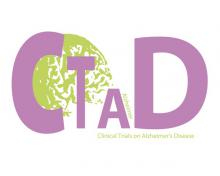Objectives: To assess the prevalence of intra-hospital mortality and associated risk factors in older people aged 75+, admitted with blood stream infections (BSI). Design: Single center retrospective study performed in an 850-bed of the academic hospital of the Université Libre de Bruxelles. Setting and Participants: From January 2015 to December 2017, all inpatients over 75 years old admitted with BSI were included. Measures: Demographical, clinical and microbiological data were collected. Results: 212 patients were included: median age was 82 [79-85] years and 60 % were female. The in-hospital mortality rate was 19%. The majority of microorganisms were Gram-negative strains, of which Escherichia coli was the most common, and urinary tract infection was the most common origin of BSI. Compared to patients who survived, the non-survivor group had a higher SOFA score (6 versus 3, p<0.0001), a higher comorbidity score (5 versus 4, p<0.0001), more respiratory tract infections (28 vs 6 %, p < 0.0001) and fungal infections (5 vs 1 %, p = 0.033), bedridden status (60 vs 25 %, p < 0.0001), and healthcare related infections (60 vs 40 %, p = 0.019). Using Cox multivariable regression analysis, only SOFA score was independently associated with mortality (HR 1.75 [95%IC 1.52-2.03], p<0.0001). Conclusions and Implications: BSI in older people are severe infections associated with a significant in-hospital mortality. Severity of clinical presentation at onset remains the most important predictor of mortality for BSI in older people. BSI originating from respiratory source and bedridden patients are at greater risk of intra-hospital mortality. Further prospective studies are needed to confirm these results. Key words: Blood stream infections, older adults, mortality, bacteremia, SOFA. J Frailty Aging 2020;in press Published online January 6, 2020, http://dx.doi.org/10.14283/jfa.2019.45
(1) D. Angioni, M. Hites, F. Jacobs, S. De Breucker J Frailty Aging 2020;in press



